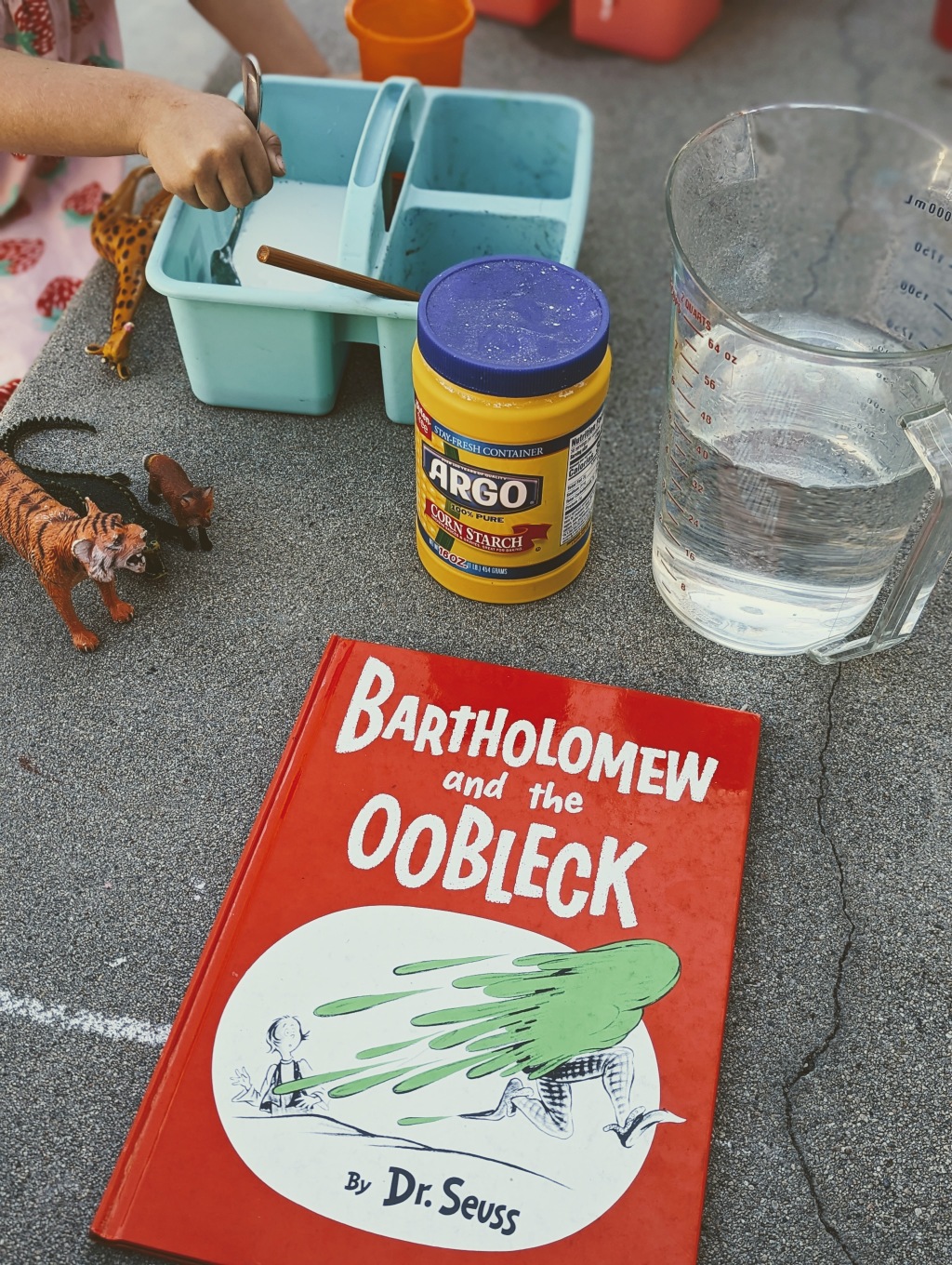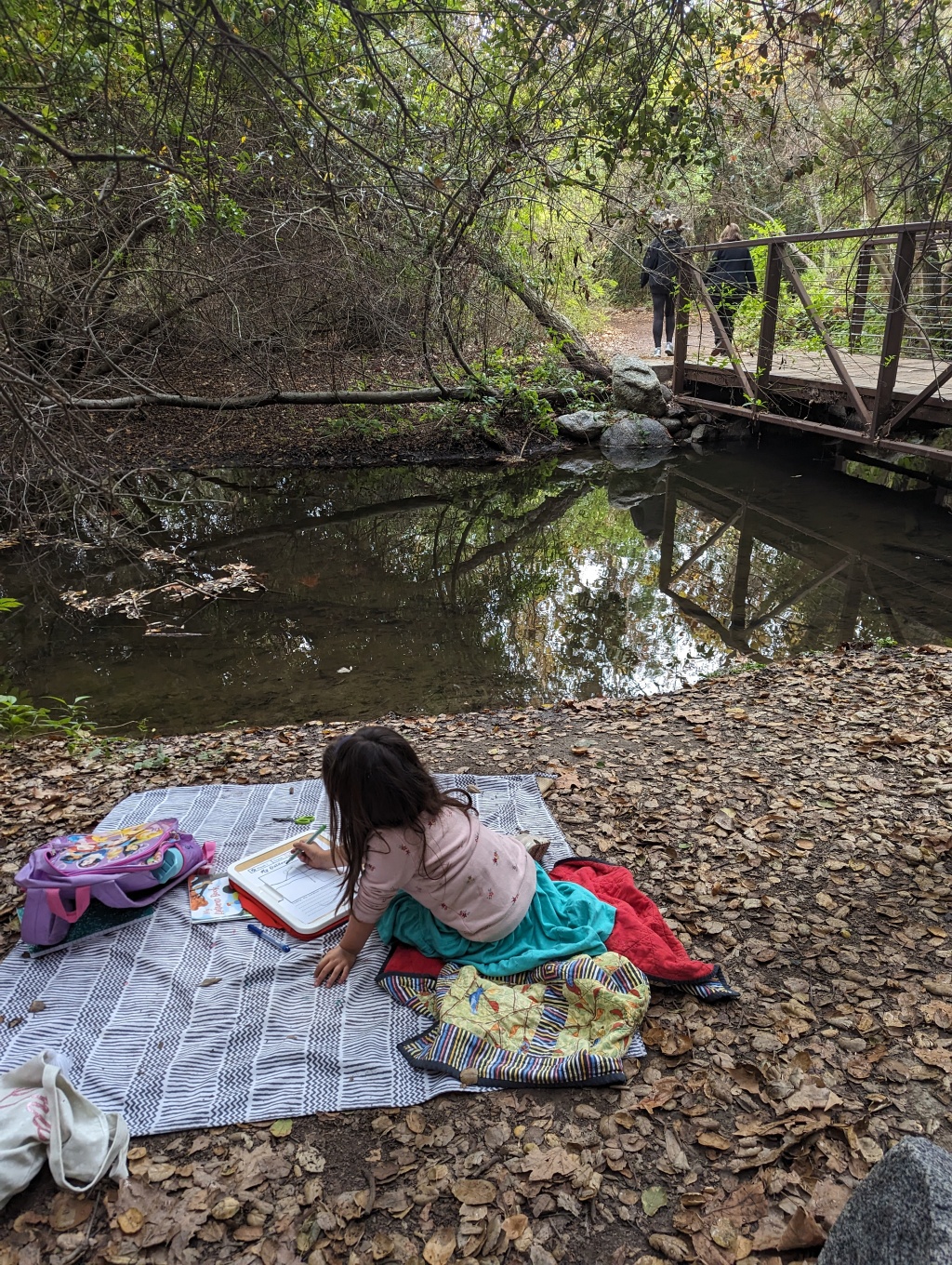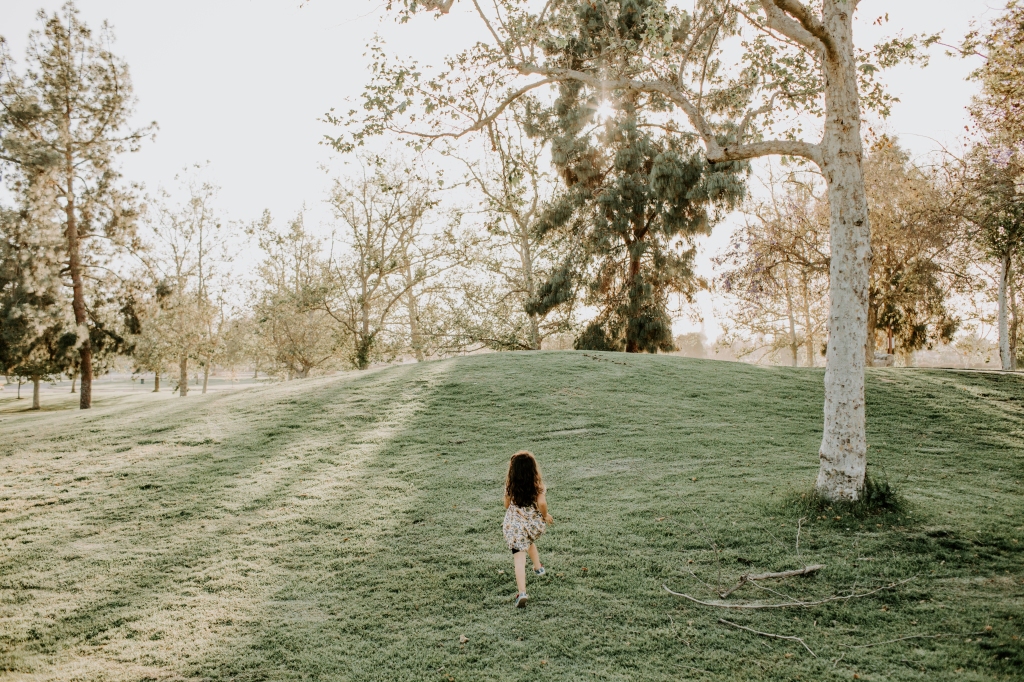Hands on Activities to explore the concept of Capacity
As I was searching through math lesson ideas and standards for this week for my daughter, I came across a capacity versus volume lesson. Capacity?? Volume?? These are things I discuss with my middle school science students, I started wondering why and how for my 5 year old. So I started looking into it. Capacity and volume are the vocabulary words for, “How much does it hold?” and “How much is in the container?”. That’s when a light bulb turned on in my head and I made the connection to so many reasons why to teach capacity and volume and so many fun ways to do it.

So I rolled up my sleeves (literally) and we tried it. I grabbed a bowl, a 1/2 cup measuring cup to work as a scoop, water, dried noodles and popcorn. I asked her to use the scoop to fill the bowl with the popcorn. We counted the scoops as we went. She counted 9 scoops. We emptied the popcorn from the bowl then repeated the exercise with the noodles… 9 scoops! Then again with the water…9 scoops! Now, at this point I think my excitement (that it worked) was more than hers.. but we then talked about how it didn’t matter what we put in the bowl, the capacity is 9 scoops!
I then, excitedly, immediately jumped into my next exercise. I filled two different vases with water to the top. One tall and skinny, one short and wide. I asked which had more. She said the tall skinny one. So then we poured both into two separate mason jars she saw that the tall skinny one had less. I noticed her interest had waned at this point…but we will be revisiting! I have a ton of ideas and can’t wait to continue to play with capacity.
Why Early Math Should Include Capacity and Volume
- Early Math Concepts – Measurement and comparison are foundational math concepts
- Vocabulary and language development – They become familiar with words like “full,” “empty,” “more,” “less,” “half-full,” “big,” and “small,” enhancing their ability to express and understand different quantities.
- Critical Thinking – Children learn to compare, order, and describe objects based on their sizes and volumes, fostering analytical skills from an early age.
- Daily life Application – Children can use their understanding of capacity when pouring drinks, filling containers, or sharing snacks, making the learning experience relevant to their everyday experiences.
- Sensory Play– Capacity is all about filling and emptying containers. Get out the pitchers, buckets, pasta, water, beads and start playing.
Gathering Playful Tools: Materials You’ll Need
The things needed to teach capacity and volume are things you probably already have at home! Don’t go buy anything. Seriously, you definitely have everything you need.
- Various sizes of containers. Include tall skinny, short wide and unusual shapes.
- Various fillers: Water, dried beans, dried pasta, popcorn, sand
- Different sized scoops
- A measuring cup with lines
Hands on Experience
The first experience should be a very open invitation to play and explore the concept of capacity. If weather permits, outside is a great place to do this activity. Otherwise, the bathtub is perfect! (We do A LOT of the “messy stuff” in the tub).
- Have your kiddo fill up a small container of water then pour the water into a larger container. Does the water from the smaller container fill the large one? Then reverse! (This does cause overflow, but oh so fun!)
- Fill two different containers to the top. Are they holding the same amount of liquid? How can we test this? (pour each into two different identical containers…do they match up?)
- Use a scoop as a measuring tool. Count scoops of water or other material as you fill up one container. Then repeat with the same scoop and same container but different material (noodles, beans, sand etc.). How many scoops does it take now? (hint: it will be the same!)
Teaching these concepts to young learners isn’t just about numbers and measurements; it’s about sparking curiosity, enhancing vocabulary, and building critical thinking skills that they’ll carry with them throughout their lives.
Remember, the key is to keep it playful and engaging. Whether it’s through pouring water, counting scoops of popcorn, or comparing the capacities of quirky-shaped containers, every moment is an opportunity for discovery. These activities not only make math fun but also show kids the practical side of what they’re learning, connecting the dots between the math and the world around them. Hello cooking and baking skills!
As you continue this journey with your little ones, keep in mind that every spill, every giggle, and every “Aha!” moment is a step towards a deeper understanding of the world. So go ahead, get your hands dirty, laugh at the messes, and celebrate each little learning milestone. After all, it’s these hands-on experiences that lay the foundation for a lifelong love of learning.

Looking for follow up printable worksheets? Click here or the image above
Got any other cool capacity and volume activities up your sleeve? Share them in the comments below – let’s keep the learning and the fun flowing!
Cheers,
Lauren





Leave a comment